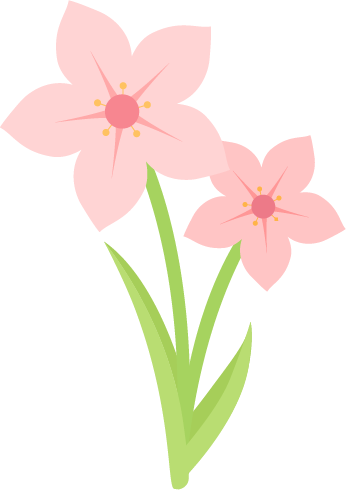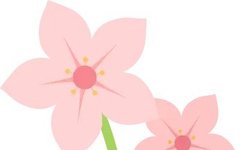 Follow Us for a Better Life
Follow Us for a Better Life
Traditional Chinese Medicine (TCM), as an ancient medical practice in China, has accumulated a wealth of treatment experiences over thousands of years. This article will introduce some classic cases of TCM treatments throughout history, allowing us to appreciate the magical charm of TCM.
 Ancient TCM Treatments for Royal Diseases
Ancient TCM Treatments for Royal Diseases
Ancient TCM had rich experience in treating royal diseases. For example, during the Ming Dynasty, the famous physician Li Shizhen established the “Four Diagnostic Methods” and the “Pattern Differentiation Treatment Method,” and he was proficient in using TCM herbs and acupuncture techniques. He is one of the important representatives of TCM. During the reign of the Ming Emperor Zhu Di (known as the ruthless “Yongle Emperor”), who ruled for over 8000 days, he was diligent in governance and engaged in wars, suffering from both mental and physical ailments in his later years due to anxiety over usurpation. Li Shizhen served as an official in the Ming Dynasty’s Imperial Medical Institute, providing medical services to royal family members. His acupuncture treatments significantly alleviated the suffering of Emperor Zhu Di, achieving remarkable results.
 Famous TCM Practitioners Treating Notable Figures
Famous TCM Practitioners Treating Notable Figures
The “Suwen” states: “The waist is the organ of the kidneys; if it cannot move, the kidneys will be exhausted. If this is the case, it is known that the kidneys are related to the waist, often due to excessive desires, which injure the kidney meridian. When the kidneys are deficient, emotions such as anger, worry, and fear can harm them, leading to lower back pain. Additionally, falls and stagnation of qi and blood can also cause lower back pain. When encountering lower back pain, TCM treatment focuses on tonifying the liver and kidneys, nourishing blood and kidney qi, invigorating blood circulation, and unblocking meridians. The Tang Dynasty physician Sun Simiao also used the Du Huo Ji Sheng Decoction (Du Huo Ji Sheng Tang) to treat Emperor Taizong’s lower back pain, combining TCM massage techniques to alleviate the emperor’s condition.
 Application of TCM During Wartime
Application of TCM During Wartime
During the Anti-Japanese War, amidst national crisis, the TCM community joined the fight alongside the people. According to the records in “Logistics Work – Memoirs (1),” “Medical personnel were both doctors and pharmacists, including both TCM and Western medicine, as well as integrated Chinese-Western medicine.” During the war, based on the “Injury Treatment Compendium,” chicken skin was used as a biological dressing for wound treatment, and TCM was applied to treat gunshot wounds. TCM also provided effective treatments for diseases such as diarrhea and fever caused by harsh battlefield conditions. The hard work of hundreds of thousands of TCM practitioners during the war ensured the health of millions of anti-Japanese soldiers and received high praise from all sectors.
 Application of TCM During Natural Disasters
Application of TCM During Natural Disasters
In natural disasters, TCM also has rich experience in rescue. For example, during the Jiajing period of the Ming Dynasty, floods in the Jiangnan region led to an outbreak of epidemics. At that time, local governments used TCM herbs for treatment, effectively controlling the epidemic. Nowadays, after earthquakes, TCM experts use the Longzhong Bone-setting Technique to treat earthquake victims.
 Application of TCM During Epidemics
Application of TCM During Epidemics
Before the Qing Dynasty, TCM primarily used the theories of the Six Meridians, Three Jiao, and Wei Qi Ying Blood for treatment of acute infectious diseases, without specific disease names. Gradually, research showed that TCM treatments have advantages such as early intervention, combating pathogens, protecting organ tissues, and enhancing immune function, using multiple methods in a comprehensive and synergistic manner to mobilize the body’s internal factors, eliminate epidemic toxins, and without significant toxic side effects. For instance, during the SARS outbreak in 2003, some regions in China used TCM to participate in treatment, achieving a lower mortality rate.
 Reflections of TCM Treatment in Ancient Literature
Reflections of TCM Treatment in Ancient Literature
Ancient literary works also contain numerous cases of TCM treatment. For example, it has been reported that there are nearly 300 instances of medical and health knowledge in “Dream of the Red Chamber,” with 161 medical terms used, 114 case descriptions, 13 TCM case studies, 45 formulas, and 125 herbs, along with 3 Western medicines. In the seventh chapter of “Dream of the Red Chamber,” titled “Sending Palace Flowers, Jia Lian Teases Xi Feng, Banquet at Ningfu, Baoyu Meets Qin Zhong,” Xue Baochai suffered from an unnamed strange illness in her youth, which did not respond to various famous doctors and medicines. It was not until a leper monk pointed out it was due to “heat toxin from the fetus” and prescribed a “sea-based formula,” along with a packet of medicinal powder as a catalyst, that Baochai saw improvement after taking it. Additionally, Jia Baoyu was injured, and Wang Xifeng used TCM to treat him, leading to his recovery.
Conclusion: Throughout history, TCM has accumulated a wealth of treatment experiences, achieving significant results not only in treating royal diseases and notable figures but also playing an important role during wars, natural disasters, and epidemics. Let us inherit and promote TCM culture, making greater contributions to human health.

